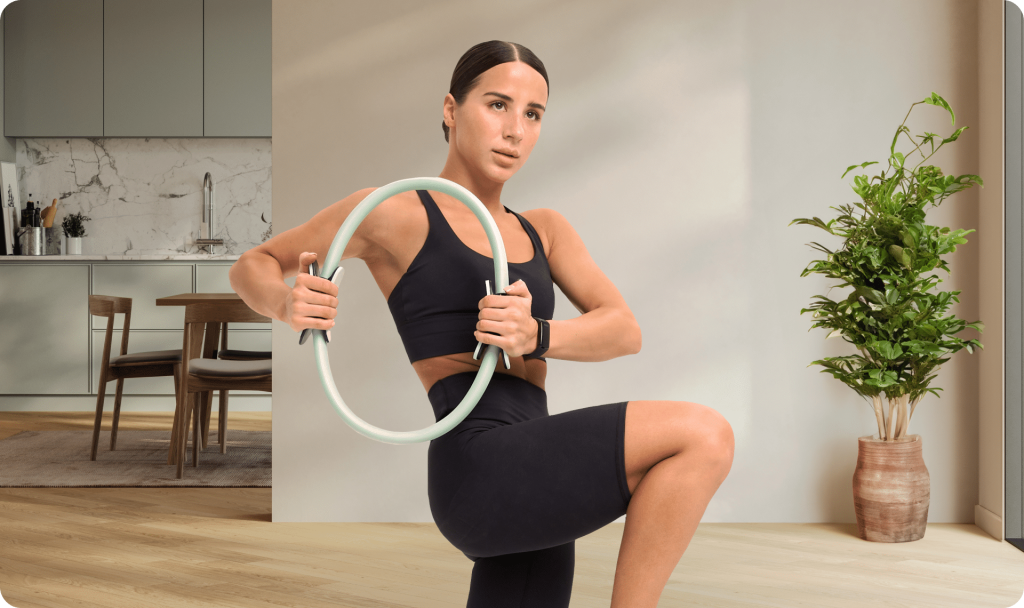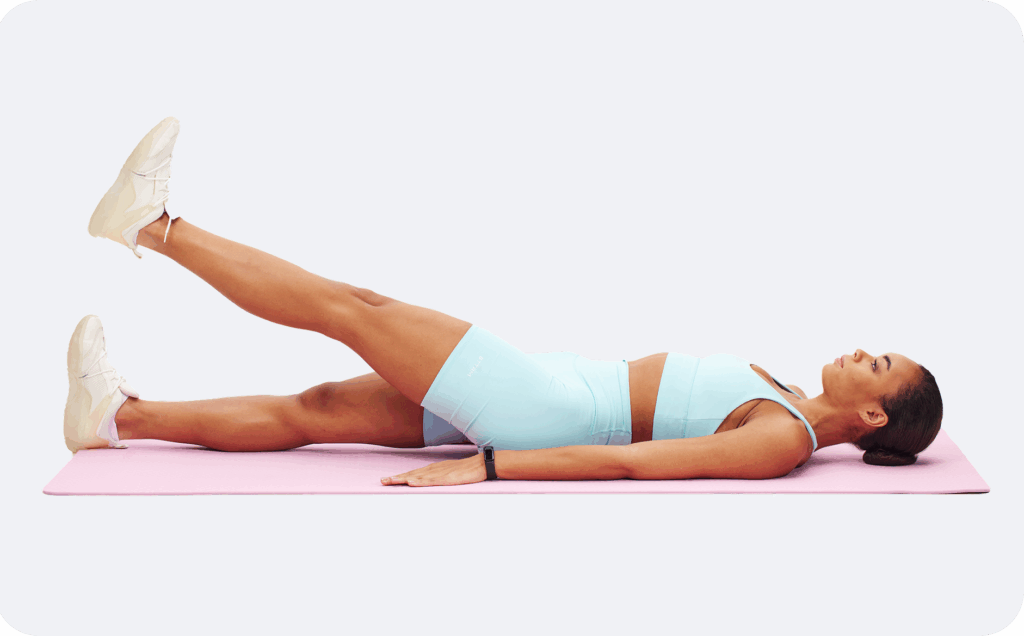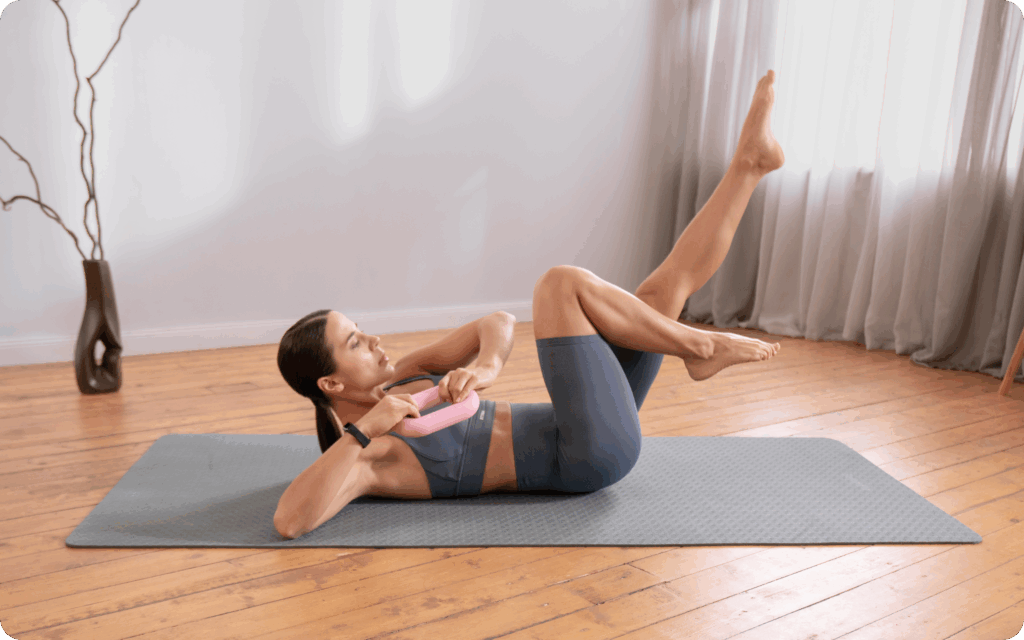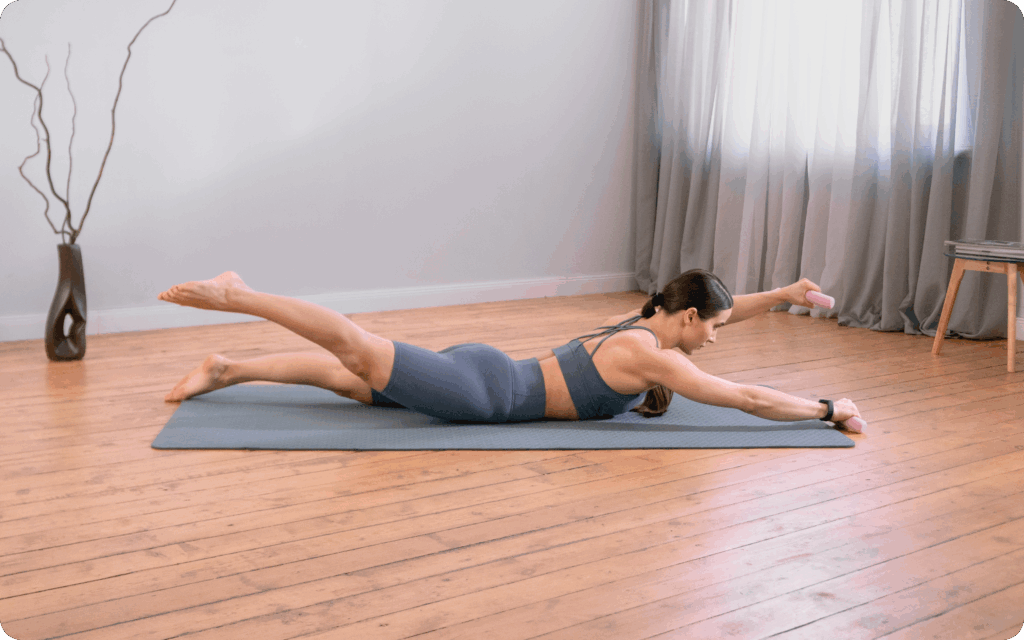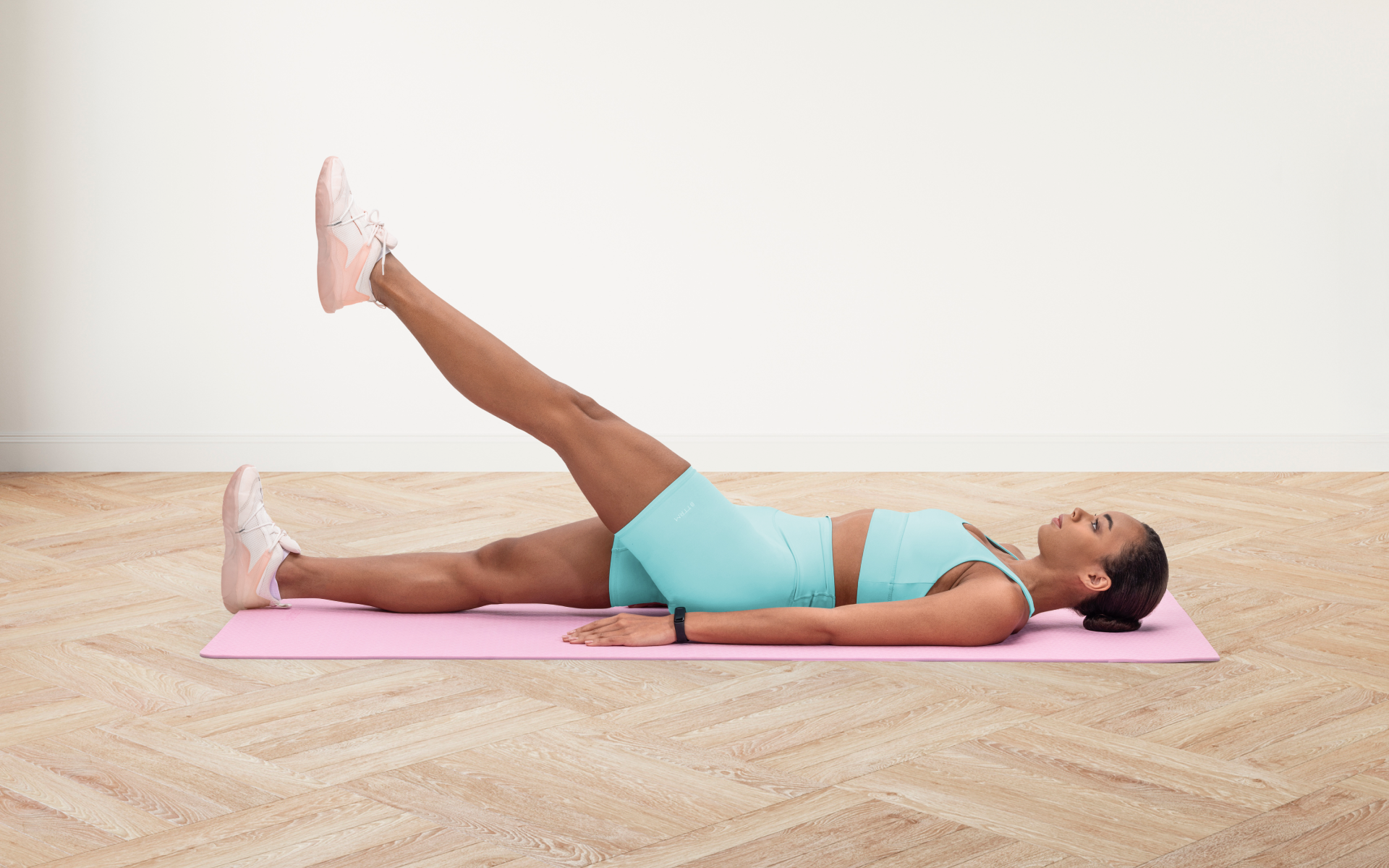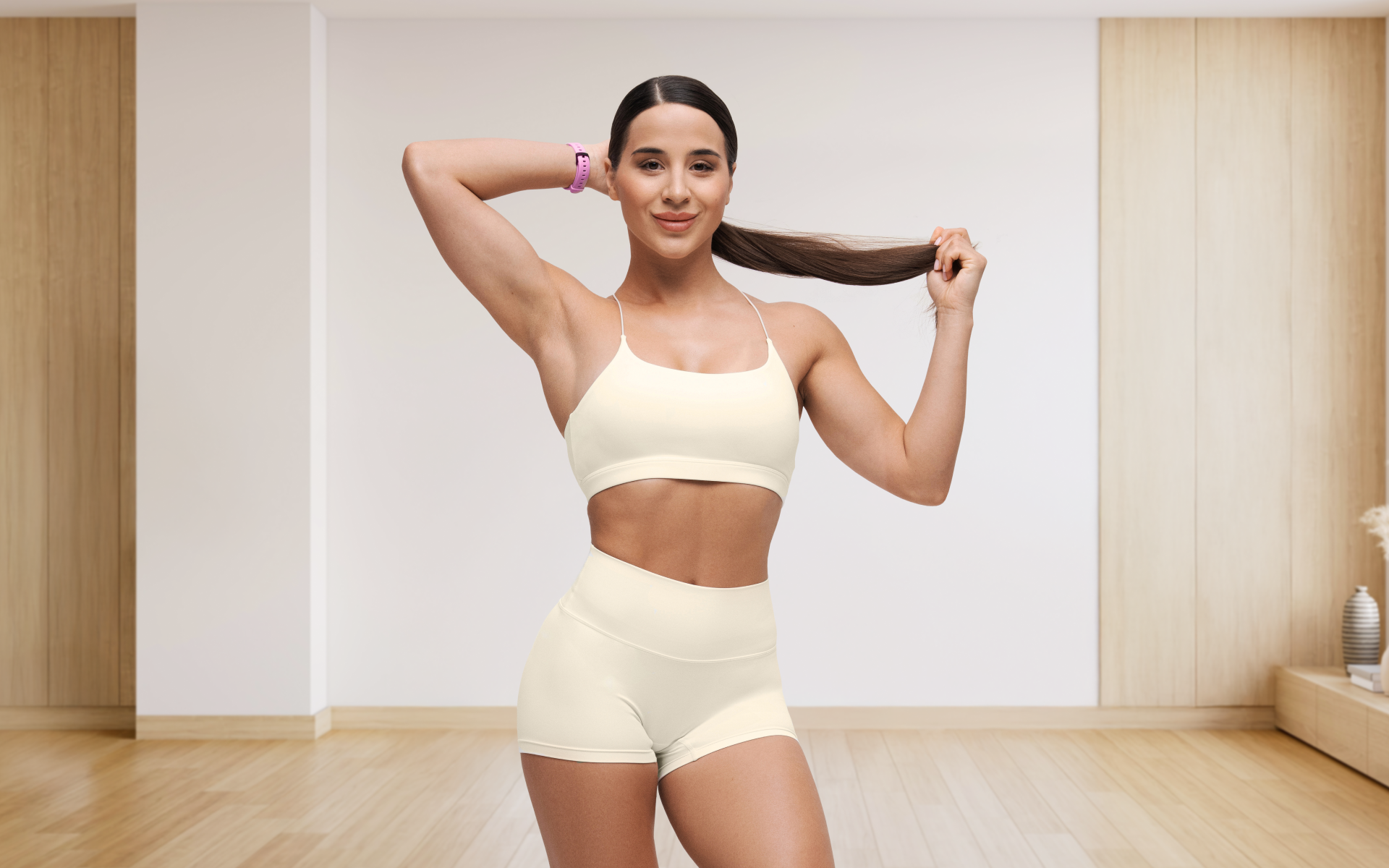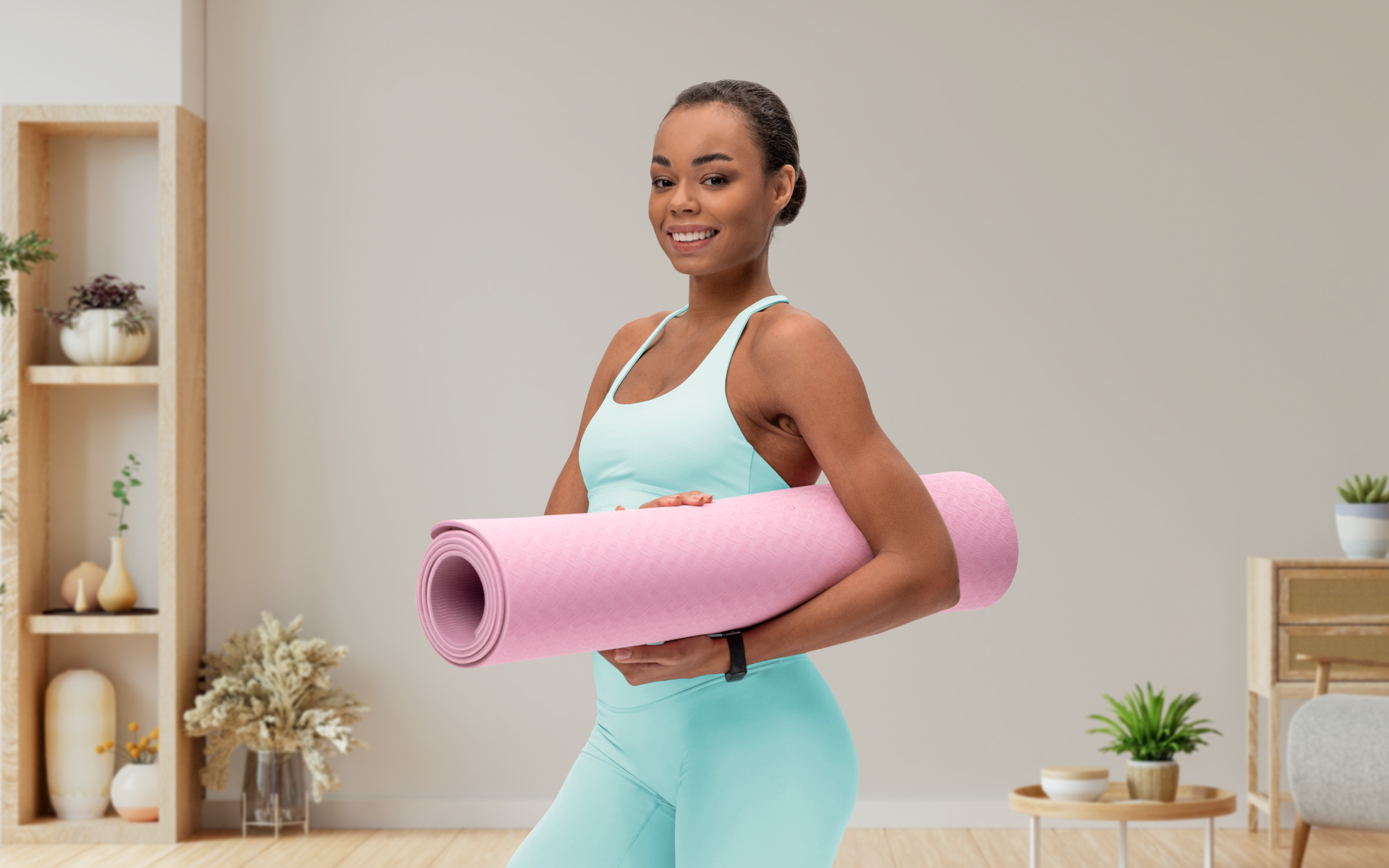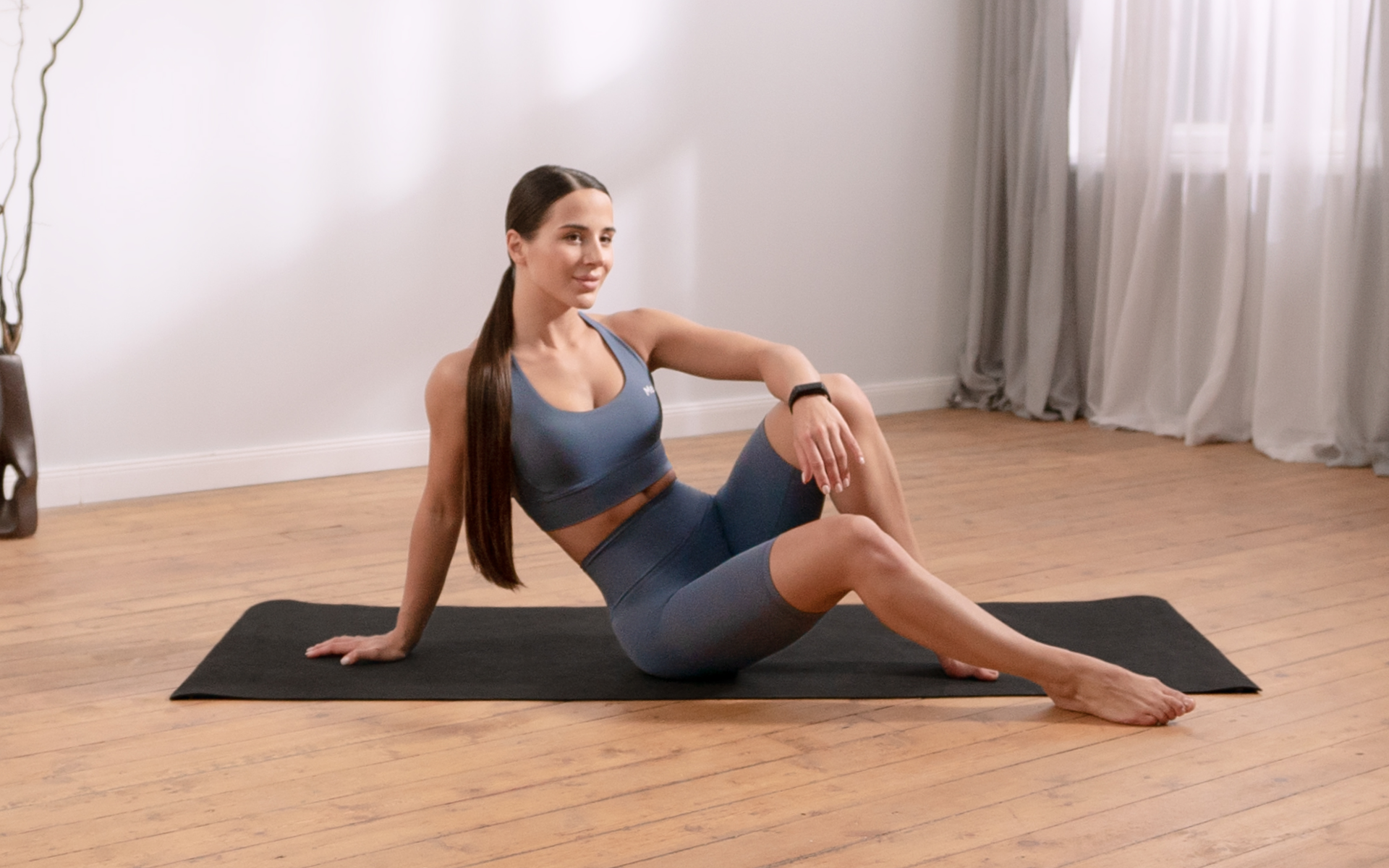Pilates offers a powerful way to build strength, flexibility, and control. It focuses on precise movements and controlled breathing to create a strong, balanced body.
For those who are new to the practice, the idea of mastering these exercises can seem intimidating. However, starting with the fundamentals provides a clear path to building proficiency and achieving a comprehensive full-body workout.
This guide will walk you through everything a beginner needs to know. We’ll explore the initial challenges you might face, recommend the best starting point, and detail 10 foundational Pilates exercises you can do at home. By the end, you’ll have a clear, structured plan to start your Pilates journey with confidence.
Is Pilates Difficult for a Beginner?
Pilates can feel challenging for a beginner. The challenge doesn’t come from heavy lifting or high-impact movements, but from the precision and control that are required for each exercise.
Beginners may find Pilates difficult for several reasons:
- Core Engagement: Pilates is famous for its focus on the “powerhouse” – the deep muscles of the abdomen, back, and pelvic floor (1). Learning to engage these muscles correctly takes time and practice.
- Mind-Body Connection: The practice demands intense concentration. You must connect your mind to your body, focusing on your breath and the quality of each movement, which can be mentally taxing initially.
- New Movement Patterns: Pilates introduces unique exercises your body may not be used to. This can make the initial learning phase feel awkward as you develop new motor skills and coordination.
- Emphasis on Control: Unlike other forms of exercise where momentum can help, Pilates requires you to control every part of the movement (2). This slow, deliberate pace can be surprisingly demanding.
Despite these challenges, Pilates is highly adaptable. With consistent practice, you’ll build the foundational strength and awareness needed to progress.
Are you looking for a structured way to start? Consider joining our Pilates at home challenge.
Reasons why BetterMe is a safe bet: a wide range of calorie-blasting workouts, finger-licking recipes, 24/7 support, challenges that’ll keep you on your best game, and that just scratches the surface! Start using our app and watch the magic happen.
What Type of Pilates Is Best for Beginners?
The best type of Pilates for beginners is mat Pilates, specifically the foundational exercises that are outlined in Joseph Pilates’ original work, Return to Life through Contrology (3).
Mat Pilates is ideal as it uses your own body weight as resistance, which makes it accessible to do anywhere, including at home. The 34 exercises in Return to Life form the complete classical system, but starting with the most basic movements will allow you to build a solid foundation (3). These initial exercises teach core principles such as centering, control, concentration, precision, breath, and flow (4). As you master these, you can gradually progress to more complex variations.
Joseph Pilates also invented equipment such as the reformer, which uses springs, pulleys, and a sliding carriage to provide resistance and support (5).
While the reformer can be beneficial for beginners by providing assistance and feedback, it’s often best to first build foundational strength and body awareness through mat work. Once you’re comfortable with the basic mat exercises, transitioning to a reformer can offer a new and exciting challenge.
Read more: What Is the Best Wall Pilates Challenge to Try in 2025?
What Are the 10 Basic Pilates Exercises for Beginners?
The 10 exercises shown here from the original 34 are designed to provide a comprehensive, full-body workout. They target the core, improve spinal mobility, and strengthen both the upper and lower body, giving you a complete introduction to the Pilates method.
1. The Hundred
This classic exercise warms up the body, synchronizes breath with movement, and builds abdominal endurance.
Steps:
- Lie on your back with your knees bent and your feet flat on the floor.
- Lift your head and shoulders off the mat, engaging your abs.
- Extend your legs out to a 45-degree angle (or keep your knees bent for a modification).
- Extend your arms long by your sides, hovering a few inches above the mat.
- Pump your arms up and down vigorously while inhaling for five counts and exhaling for five counts.
- Repeat this breathing pattern 10 times for a total of 100 pumps.
2. The Roll Up
This exercise improves spinal articulation, stretches the hamstrings, and strengthens the abdominal muscles.
Steps:
- Lie on your back with your legs straight and your arms extended overhead.
- Inhale as you lift your arms toward the ceiling.
- Exhale as you peel your spine off the mat one vertebra at a time, rolling up into a seated position.
- Reach forward toward your toes, keeping your abs engaged.
- Inhale and start to roll back down, articulating through the spine.
- Exhale to complete the movement, returning to the starting position.
3. One Leg Circles
This movement strengthens the hip flexors and quadriceps while improving hip mobility and core stability.
Steps:
- Lie on your back with your arms by your sides.
- Extend one leg up toward the ceiling, keeping your other leg flat on the mat.
- Circle the extended leg across your body, down, around, and back to the starting point. Keep your pelvis stable.
- Perform five circles in one direction, then reverse for five circles in the other direction.
- Switch legs and repeat.
4. Rolling Back
Also known as “rolling like a ball”, this exercise massages the spine, improves balance, and challenges core control.
Steps:
- Sit on the mat and hug your knees into your chest, lifting your feet off the floor.
- Find your balance on your sit bones, curving your spine into a “C” shape.
- Inhale as you roll back to your shoulder blades, keeping your head off the mat.
- Exhale as you roll back up to the starting position, maintaining balance without allowing your feet to touch the floor.
- Repeat 5-8 times.
5. One Leg Stretch
This is the first exercise in the “Ab Series of 5” and is excellent for building abdominal strength and coordination.
Steps:
- Lie on your back and pull both knees into your chest. Lift your head and shoulders.
- Place your right hand on your right ankle and your left hand on your right knee.
- Extend your left leg out to a 45-degree angle.
- Exhale as you switch legs, bringing your left knee in and extending your right leg out. Place your left hand on your left ankle and your right hand on your left knee.
- Continue alternating legs for 8-10 repetitions per side.
6. Double Leg Stretch
The second exercise in the “Ab Series of 5”, this move deeply works the abdominals while coordinating arm and leg movements.
Steps:
- Lie on your back with your knees pulled into your chest. Lift your head and shoulders off the mat.
- Inhale as you extend your arms and legs out simultaneously, reaching your arms overhead and your legs to a 45-degree angle.
- Exhale as you circle your arms around and hug your knees back into your chest.
- Repeat 8-10 times.
7. Spine Stretch
This exercise promotes spinal flexibility and stretches the hamstrings and back muscles.
Steps:
- Sit tall with your legs extended straight in front of you, slightly wider than your hips. Flex your feet.
- Extend your arms forward at shoulder height.
- Inhale to lengthen your spine.
- Exhale as you round your spine forward, reaching your hands toward your feet while keeping your sit bones anchored to the mat.
- Inhale as you stack your spine back up to a tall, seated position.
- Repeat 5-8 times.
8. The Saw
The saw improves spinal rotation, stretches the hamstrings, and works the oblique muscles.
Steps:
- Sit tall with your legs extended in a wide “V” shape and your arms extended out to the sides.
- Inhale as you twist your torso to the right.
- Exhale as you reach your left hand toward your right foot, “sawing” off your little toe. Your back arm reaches up and back.
- Inhale as you return to the center.
- Repeat on the other side.
- Perform 3-5 repetitions per side.
BetterMe: Health Coaching app helps you achieve your body goals with ease and efficiency by helping to choose proper meal plans and effective workouts. Start using our app and you will see good results in a short time.
9. Shoulder Bridge
This exercise strengthens the glutes, hamstrings, and back extensors while improving hip mobility.
Steps:
- Lie on your back with your knees bent, your feet flat on the floor, and your arms by your sides.
- Exhale as you lift your hips off the mat, creating a straight line from your shoulders to your knees.
- Hold at the top, squeezing your glutes.
- Inhale as you extend one leg up toward the ceiling.
- Exhale as you lower your leg, then inhale to lift it back up. Repeat 3 times.
- Return your foot to the floor and repeat with the other leg before rolling your spine back down.
Do you want to see more movements like this? Check out our list of lower-body Pilates exercises.
10. Swimming
This dynamic exercise strengthens the entire back of the body, including the glutes, hamstrings, and back muscles.
Steps:
- Lie on your stomach with your arms extended overhead and your legs straight behind you.
- Engage your abs to lift your arms, legs, chest, and head off the mat.
- Start to “swim” by lifting your opposite arm and leg simultaneously, then switching.
- Inhale for a five count and exhale for a five count as you continue the swimming motion.
- Perform for 20-30 counts.
Are you ready for a challenge? Join our Pilates at home challenge and start building a stronger, more balanced body.
How Many Times a Week Should a Beginner Do Pilates?
Joseph Pilates recommended performing his “Contrology” exercises four times a week. He believed this frequency, combined with unwavering determination, was the key to transforming the body and mind. He advised setting aside just 10 minutes on those days to practice diligently (3).
For a modern beginner, starting with 2-3 sessions per week is a realistic and effective approach. This allows your body time to recover and adapt to the new demands while still building consistency. As you become stronger and more familiar with the movements, you can increase your frequency to the four times a week Pilates himself advocated for.
Read more: Pilates Warm-Up: Why You Should Be Doing It and Simple Exercises to Try
What Is Better, Yoga or Pilates for Beginners?
Neither yoga nor Pilates is definitively “better” for beginners – they simply offer different benefits and experiences. The best choice depends entirely on your personal fitness goals and preferences.
Yoga is a holistic practice that emphasizes the connection between mind, body, and spirit. It typically involves holding static poses (asanas) and flowing through sequences, with a strong focus on breathwork (pranayama) and meditation. For a beginner, yoga can be an excellent way to improve flexibility, reduce stress, and enhance overall mindfulness (6).
Pilates, on the other hand, is a system of exercise that is focused on building core strength, improving posture, and creating long, lean muscles. The movements are more dynamic and precise, with a constant emphasis on engaging the “powerhouse” (7). For a beginner whose goals are centered on strengthening the core and improving body control, Pilates is an ideal choice.
Ultimately, both practices are fantastic for beginners. You could even incorporate both into your fitness routine to enjoy the unique benefits of each.
No, 70 isn’t too old for Pilates. Joseph Pilates famously said, “If your spine is inflexibly stiff at 30, you are old; if it is completely flexible at 60, you are young.” Age isn’t a barrier. In fact, Pilates is excellent for seniors as it’s low-impact and can be modified to suit any fitness level, helping improve balance, strength, and flexibility (8). Pilates is difficult at first as it challenges the body in new ways. It requires activating deep core muscles that are often underused, maintaining intense mental focus, and learning precise movement patterns. This combination of physical control and mental concentration can be demanding for beginners. Pilates and gym workouts serve different purposes. Gym workouts often focus on building muscle mass (hypertrophy) or cardiovascular endurance through weightlifting and cardio machines (9), while Pilates focuses on functional strength, core stability, flexibility, and posture (10). The “better” option depends on your goals. Many people find that combining both provides a well-rounded fitness regimen. While Pilates has many benefits, potential disadvantages include the cost of classes or equipment, the initial learning curve that can frustrate some beginners, and a lower cardiovascular demand compared to exercises such as running or cycling. In addition, if it’s not taught correctly, there’s a risk of injury, so it’s important to learn from a qualified instructor.Frequently Asked Questions
Is 70 too old for Pilates?
Why is Pilates so hard at first?
Which is better, Pilates or the gym?
What are the disadvantages of Pilates?
The Bottom Line
Starting a Pilates practice is an investment in your long-term health and well-being. By starting with these 10 basic Pilates exercises, you can lay a strong foundation, improve your posture, and develop a deeper connection between your mind and body. Remember to be patient with yourself, focus on the quality of your movements, and remain consistent. With dedication, you’ll soon experience the transformative power of Pilates.
DISCLAIMER:
This article is intended for general informational purposes only and does not serve to address individual circumstances. It is not a substitute for professional advice or help and should not be relied on for making any kind of decision-making. Any action taken as a direct or indirect result of the information in this article is entirely at your own risk and is your sole responsibility.
BetterMe, its content staff, and its medical advisors accept no responsibility for inaccuracies, errors, misstatements, inconsistencies, or omissions and specifically disclaim any liability, loss or risk, personal, professional or otherwise, which may be incurred as a consequence, directly or indirectly, of the use and/or application of any content.
You should always seek the advice of your physician or other qualified health provider with any questions you may have regarding a medical condition or your specific situation. Never disregard professional medical advice or delay seeking it because of BetterMe content. If you suspect or think you may have a medical emergency, call your doctor.
SOURCES:
- Pilates and the “powerhouse”—I (2004, sciencedirect.com)
- Pilates: What Is It? Should It Be Used in Rehabilitation? (2011, pmc.ncbi.nlm.nih.gov)
- PILATES’ – Return to Life Through – Contrology (1945, books.out.csli.me)
- The Pilates method: history and philosophy (2001, academia.edu)
- Anatomy of a reformer: what to look for in this classic piece of Pilates equipment (2003, go.gale.com)
- Exploring the therapeutic effects of yoga and its ability to increase quality of life (2011, pmc.ncbi.nlm.nih.gov)
- Pilates: how does it work and who needs it? (2011, pmc.ncbi.nlm.nih.gov)
- Benefits of Pilates in the Elderly Population: A Systematic Review and Meta-Analysis (2011, pmc.ncbi.nlm.nih.gov)
- The Need for Gym Exercises and the Imminent Benefits (2021, researchgate.net)
- Pilates (n.d., physio-pedia.com)


